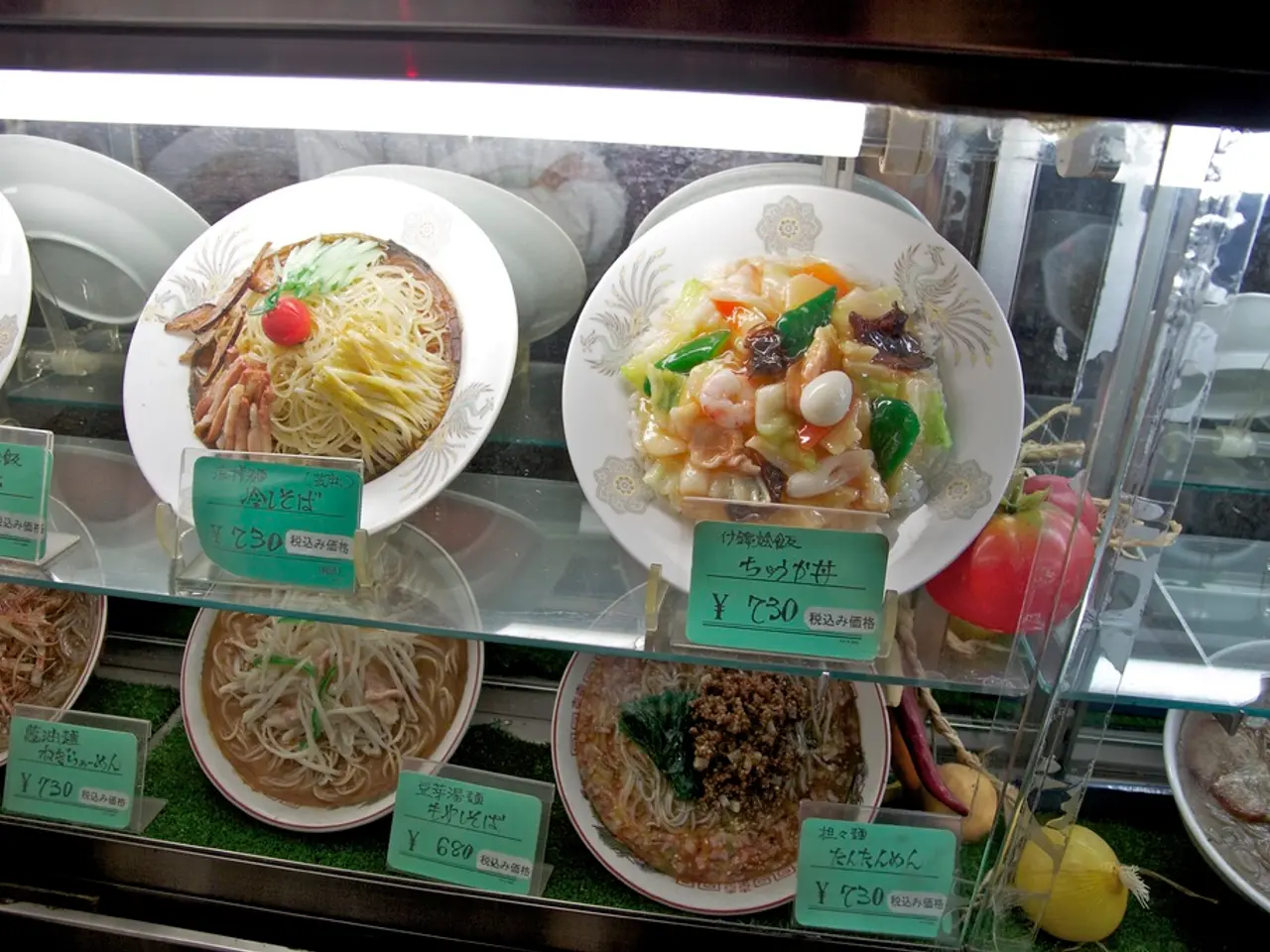Tracking of Food's Pathways from Farm to Table utilizing Blockchain Technology
In the realm of food production and supply, a revolutionary technology is making waves - blockchain. This digital notebook, as it's often referred to, is redefining the way we trace the journey of our food from farm to table.
Carrefour, a leading retailer, is already leveraging blockchain to track a variety of products including chicken, cheese, and fresh fruits and vegetables. Similarly, Walmart, in partnership with IBM, has created Food Trust, a blockchain-based platform for tracking produce like mangoes, lettuce, and spinach.
The beauty of blockchain lies in its immutability and reliability. Once data is recorded on the blockchain, it cannot be altered or deleted, ensuring the information is accurate and trustworthy. This end-to-end digital ledger records every stage of the food journey—from planting and harvesting through processing, logistics, and retail—in a tamper-proof, accessible manner.
This transparency extends to consumers. By scanning QR codes on product labels, shoppers can access detailed information about the origin, handling, and packaging of their food. This level of transparency not only boosts consumer confidence but also empowers them to make informed choices that align with their values.
Blockchain also aids in swiftly catching problems and maintaining honesty throughout the food supply chain. By pinpointing contamination sources quickly, it enables rapid, targeted recalls and reduces the spread of foodborne illness. It also flags handling risks and ensures safety checks are verifiable throughout the supply chain.
Moreover, blockchain helps reduce food fraud incidents by up to 30%. False organic or geographic origin claims can be instantly verified via blockchain-secured QR codes accessible to consumers and regulators.
The technology also streamlines compliance, automates payments, and reduces administrative costs and disputes, ensuring all parties meet safety and quality requirements. Furthermore, it allows for continuous monitoring of storage and transport conditions, ensuring compliance with quality standards and further reducing risks.
Blockchain also supports sustainable food production and supply. It enables tracking of environmentally relevant data such as farming practices and carbon footprint, promoting sustainable supply chains and certifications.
Regulators also benefit from this transparency, as they can take faster action on food safety, certification enforcement, and contamination source identification.
In conclusion, by providing an immutable, transparent, and universally accessible system for recording every event in the food supply chain, blockchain technology drastically enhances safety, reduces fraud, boosts consumer confidence, streamlines compliance, and supports sustainable food production and supply. Major companies like Walmart, Carrefour, and WWF-backed OpenSC are already embracing this technology to improve food safety, ethical sourcing, and consumer confidence. The future of food safety and transparency lies in the power of blockchain.
[1] Carrefour. (2020). Carrefour and IBM to use blockchain to trace fresh produce. IBM Newsroom. https://newsroom.ibm.com/uk-en/carrefour-and-ibm-to-use-blockchain-to-trace-fresh-produce/
[2] Walmart. (2016). Walmart and IBM Announce Global Food Safety Initiative Pilot Using Blockchain Technology. Walmart Newsroom. https://corporate.walmart.com/newsroom/2016/02/walmart-and-ibm-announce-global-food-safety-initiative-pilot-using-blockchain-technology
[3] WWF. (2019). OpenSC. WWF. https://www.open-sc.org/
[4] Food Safety Tech. (2019). How Blockchain Can Improve Food Safety and Transparency. Food Safety Tech. https://www.foodsafetytech.com/articles/how-blockchain-can-improve-food-safety-and-transparency/
[5] Forbes. (2019). How Blockchain Is Improving Food Safety. Forbes. https://www.forbes.com/sites/forbestechcouncil/2019/03/11/how-blockchain-is-improving-food-safety/?sh=62e74a2a6486
- In line with Carrefour and Walmart's efforts, lifestyle magazines can start highlighting how blockchain technology is revolutionizing the food and drink industry by providing a reliable, tamper-proof digital ledger for tracing the journey of food from farm to table.
- As consumers increasingly prioritize food and drink products with transparent origins and ethical sourcing, technology-focused publications can delve into the role of blockchain in data and cloud computing, explaining how it helps reduce food fraud incidents by up to 30% and streamlines compliance, thus ensuring all parties meet safety and quality requirements.
- Furthermore, food magazines and tech-oriented publications can explore how blockchain supports sustainable food production and supply by enabling tracking of environmentally relevant data, promoting sustainable supply chains and certifications, and reducing risks associated with food fraud and contamination.




